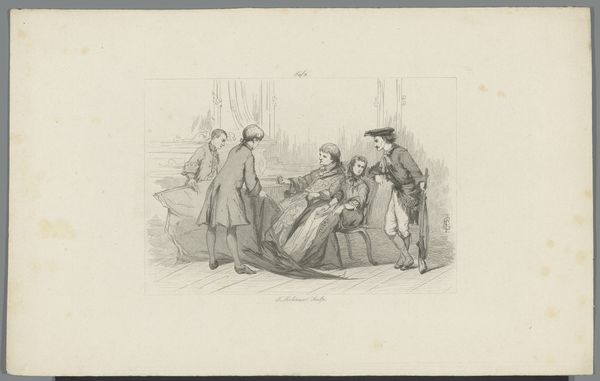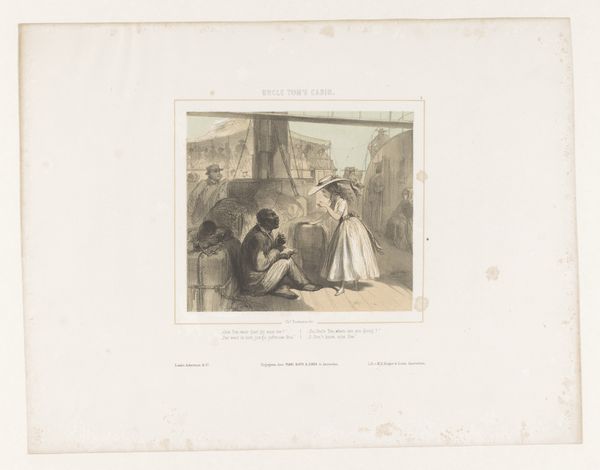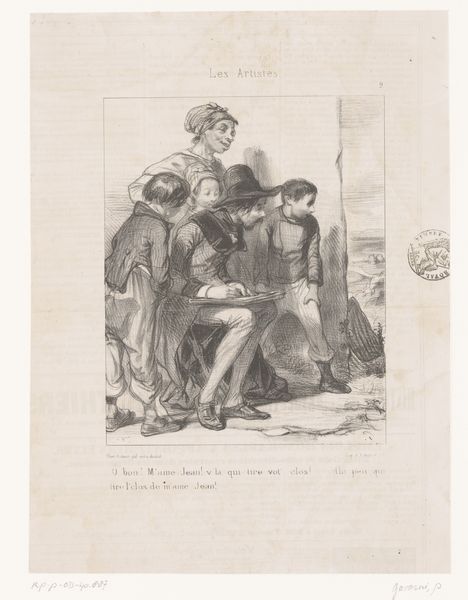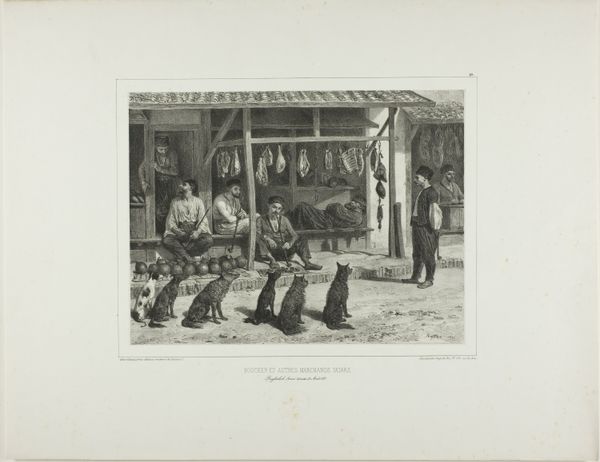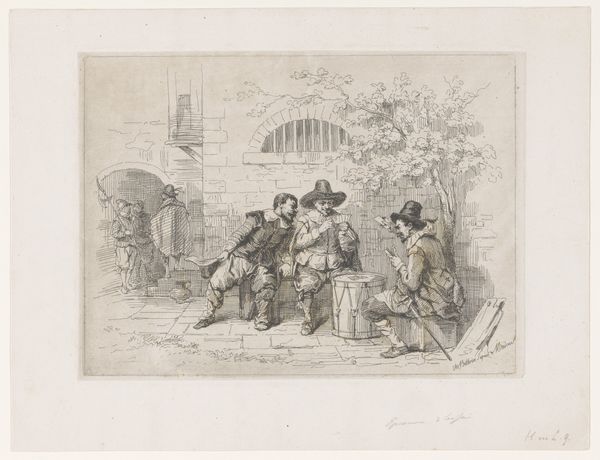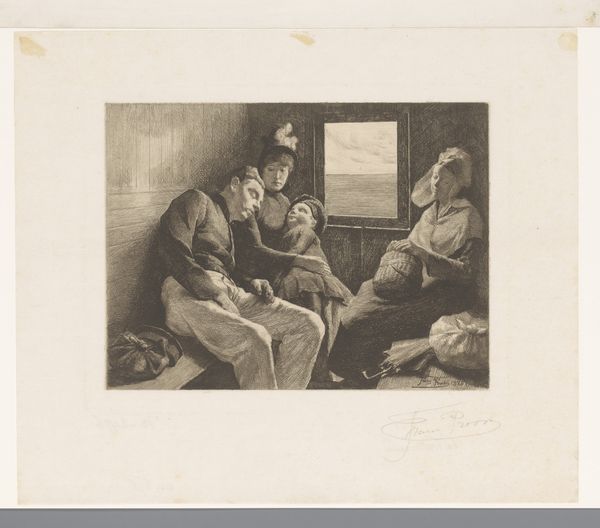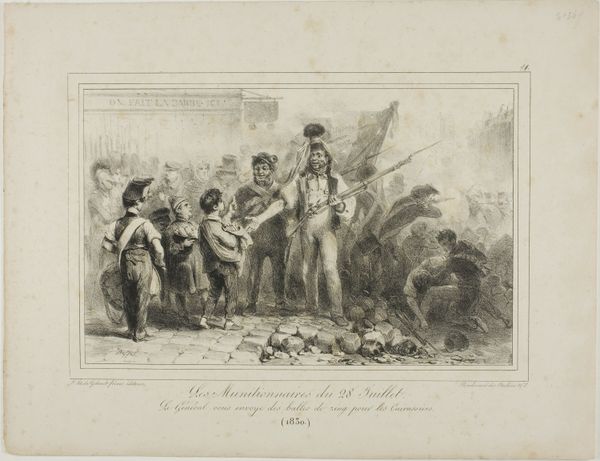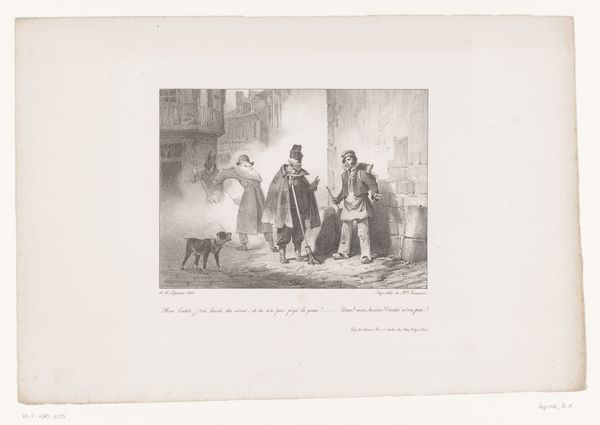
drawing, graphic-art, lithograph, print, paper
#
portrait
#
drawing
#
graphic-art
#
narrative-art
#
lithograph
# print
#
paper
#
romanticism
#
france
#
genre-painting
#
history-painting
Dimensions: 167 × 217 mm (image); 269 × 356 mm (sheet)
Copyright: Public Domain
Editor: This is Auguste Raffet's "Military Prison," a lithograph from 1827. It's quite a sobering scene. The figures seem weighed down, almost defeated. What stands out to you? Curator: The image pulsates with quiet rebellion. See how Raffet depicts the prisoners not merely as bodies but imbues each with a distinct gaze, hinting at untold stories. Even the food bearer possesses this quiet defiance. Editor: I see that now, the individual expressions amidst the collective experience. Does the setting – the prison itself – play a symbolic role? Curator: Absolutely. Notice the rough-hewn wall with graffiti, likely messages or laments etched by previous inmates. The door, massive and imposing, speaks to confinement, but also a boundary they inwardly strive to cross. These elements speak to how systems try to erase personhood, but these figures stubbornly persevere. Editor: It's interesting how the symbols, even the subtle ones like the graffiti, contribute to a larger narrative about resilience against oppression. Curator: Think, too, of the tradition of prison art. Across cultures, images created in captivity become potent emblems of human spirit enduring hardship. This piece feels aligned with that impulse – to inscribe existence upon the walls of oblivion. It begs a vital question, doesn't it? How do individuals preserve identity amidst dehumanizing conditions? Editor: I never considered that parallel between their current predicament and the tradition of prisoners creating art! It definitely shifts my understanding of their circumstances. Thanks! Curator: And it reminds us how crucial art is, as a way to preserve the past, critique the present, and reimagine futures even from the darkest places.
Comments
No comments
Be the first to comment and join the conversation on the ultimate creative platform.
